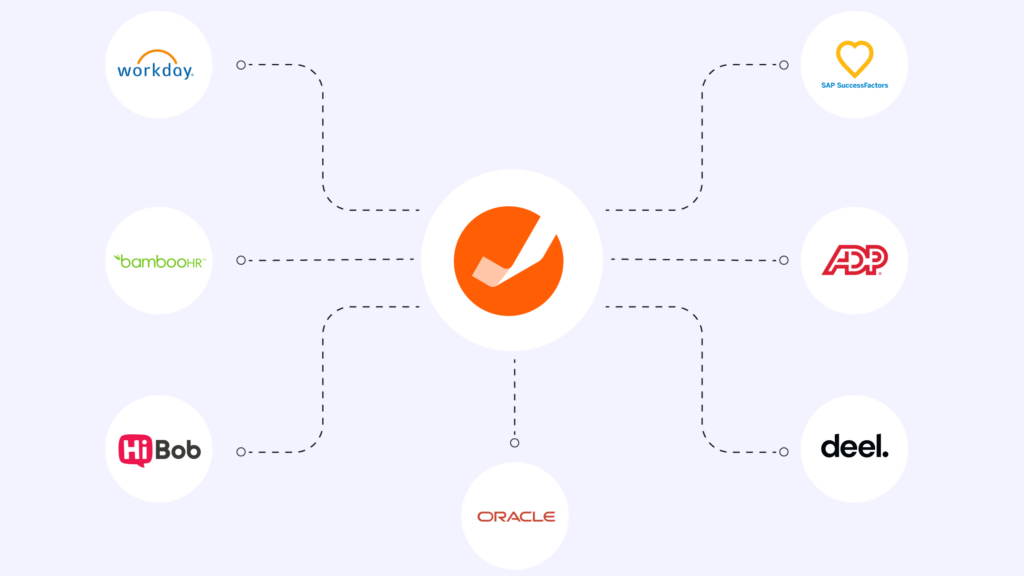How do you ensure employee engagement remains strong, or boost personal performance in a downturn? How do you protect your people’s wellbeing and be sure they can speak up when needed? Employee engagement, performance, and wellbeing really matter when it comes to having happy, healthy, and productive people. In turn, this helps your business thrive. Even during times of great change and uncertainty. So, let’s lay things out the best approach to managing people during tough times.
What are tough times?
We’re focusing on the large-scale events that impact the way we work and are often out of our direct control. Why? Like any good Scout – it’s better to be prepared. They can have huge impacts on how we operate our business and how our people work. They typically happen infrequently which means we’re less likely to plan for when they occur.
To be specific, we’re focussing on 3 events that lead to change and tough times for business and their people:
- Recessions
- Pandemics
- Mergers and acquisitions
Recessions
Countries and financial institutions have different criteria to define a recession. However, there are some shared characteristics, including significant:
- decline in economic
- decline in real income
- decline in retail sales
- decline in industrial production
- increase in unemployment
Recessions are an unavoidable part of economic cycles. And they happen more often than you’d think. Since 1900, the US has seen 23 recessions and the UK 9. There have been 4 global recessions since the end of World War II.
Recessions are on the horizon for most within the next 12 months: the US and Australia in 2023, and the UK is forecast to be a step ahead, driven by soaring energy prices.
Pandemics
A pandemic is “an epidemic…crossing international boundaries and usually affecting a large number of people.” The most obvious example is COVID-19.
The likelihood of another pandemic is low but inevitable. Now, that’s not to say you need to prepare for another pandemic soon. But as COVID-19 showed, and many experts continue to warn, a pandemic can happen at any time. Especially with international travel regaining pace.
Mergers and acquisitions
A merger happens when two or more companies join forces to create one new company. An acquisition is when one takes over another: either by force or agreement. Attempted M&A happens all the time. But successful ones rare. Between 70% and 90% fail. That’s typically because key people leave, restructuring happens, or disengagement sets in.
M&A is exciting and stressful in equal measure. But whether it’s a welcome union or a hostile takeover, they are times of immense change and uncertainty for everyone involved. HR and business leaders must anticipate and plan for the impact of managing people during tough times.
Why does employee engagement during tough times matter?
We think of employee engagement as the level of emotional sentiment and commitment an employee has to their work, their peers, and the company’s goals and purpose.
In essence it’s about how connected we are to who we work alongside, the work we’re doing, and company mission. This connection powers our commitment, effort, pride, and satisfaction we take from our work.
Employee engagement affects just about every aspect of your organization: profitability, revenue, customer experience, employee turnover, and wellbeing. It creates better processes and enables better management, so your people are happier and more productive. This leads to better morale, more satisfied customers, higher-quality products, less employee turnover, and higher profits.
All these things matter during tough times, like a cost of living crisis. But higher loyalty and lower attrition will really help weather the storm.
Why does employee performance during tough times matter?
Whilst measuring productivity is important, understanding performance is even more so when it comes to impacting wider business areas and keeping your people central to planning through a recession.
Employee performance is a mix of things, often described as someone’s ability to do their work to a particular standard. But performance encompasses much more, including:
- Punctuality
- Communication
- How happy they are to work in a team
- Attitude to work
- How they treat and interact with their colleagues
By keeping an eye on employee performance during times of change and uncertainty you can:
- Increase employee engagement
- Improve morale
- Improve your workforces attitude to business processes
- Identify and act upon problems within the work environment that will damage productivity if left unchecked — bullying, for example
- Create room to bring in changes which aim to enhance efficiency and ultimately, productivity
Why does employee wellbeing during tough times matter?
During uncertain times, focus must be laser-sharp as employees battle increased stress and worry. With that in mind, it’s important to know the basics when it comes to managing people during tough times.
Managers, leaders, and HR have a moral responsibility to look after their employees. Your people spend more time working with you than with their family and friends. Yes, you pay them to do that, but you should also do your bit in taking care of them.
Wellbeing is more than just how happy someone seems. It’s about finding a good balance between each of the four areas. The recipe is simple: Healthy employees = healthy business.
Mental wellbeing: Feeling mentally fit and able to deal with stress and negativity and being happy within yourself.
Physical wellbeing: Keeping our bodies healthy. Eating well, sleeping well, and being able to recover quickly from illness.
Social wellbeing: Having healthy relationships with people who support us. It helps us feel connected to the places we live and work.
Financial wellbeing: Being able to afford the necessities and provide safety and security for ourselves and our loved ones.
How to prepare your people for managing tough times
Your people are your secret weapon to thriving in tough times. When people are happy and healthy, they’re more likely to be engaged. And engaged people perform better. So, when it comes to managing people during tough times, prevention is always better than a cure.
Protecting your people during tough times means taking care of their wellbeing, which leads to higher engagement and better performance. Support your people and they will support you. But how do you do that? Resilience.
How is it some people always manage to make the most out of a bad situation? What stops them from taking something negative personally, or feeling vilified when things don’t go to plan? Resilience.
1. Build resilience in your people
Resilience is how you handle difficult situations. Often described as the ability to bounce back and comfortably carry-on during adversity. It measures how effectively you regulate your thoughts and emotions, as well as perceiving challenging situations as an opportunity, not a personal threat.
Having a resilient workforce has huge benefits. Your people can deal with change and are less susceptible to burnout. It drives motivation and improves employees’ overall health. That’s because resilience and workplace wellbeing are linked.
Building resilience is very much a personal journey that takes self-reflection, time, and practice. However, team leaders and managers can support an individual’s development by providing the right tools and training.
Read our 8 step guide to building resilience in your people.
2. Be open and clear when you’re managing people during tough times
During change and uncertainty, communication is key to supporting your people. Every good leader knows the importance of overcommunicating during a crisis. Urgency, transparency, and empathy help people adjust to the constantly changing conditions tough times bring.
Urgency encourages people to make quick decisions to mitigate harm.
Transparency builds people’s trust in leaders. It also shows respect for employees by recognising them as capable of coping with what is being shared. And showing empathy can foster resilience in facing the challenges that lie ahead. Especially important when managing people during tough times.
Open, honest, and regular two-way feedback is critical.
Open, honest, and regular two-way feedback between managers and employees is one of the most effective tools for building and maintaining employee engagement. Gallup report more than 90% of highly engaged businesses put communication in their top three priorities. 81% have it in their top two.
Cognitive psychology tells us that deliberately holding information back does way more harm than good. Yet some CEOs and managers choose to shut down during tough times. They think sharing bad or worrying news will be counter-productive.
The Paradox of Honesty shows that when we admit to something negative or tell people we have no idea what happens next, they feel safer with us leading them. Honesty and openness improve psychological safety.
The key thing is to talk with your people more often. Make manager/employee 1:1 meetings monthly. Run town halls when needed. Start a weekly email update from the CEO. Make sure your people have plenty of airtime to talk with you – don’t fall into the trap of only ever talking at them.
Be visible. Be honest.
3. Set goals for clarity during tough times
It may seem odd but setting clear goals will keep your entire organization on track. That’s a critical success factor when you’re managing people during tough times. Everyone is focused on the same destination, just via different routes.
Setting goals during a crisis helps to motivate and align individual, team, and department work. In uncertain times, collaborating to set goals can help to ease stress and provide much-needed support and clarity. And focusing on professional development will build resilience, helping them prepare for the challenges they’ll be facing.
But beware. During tough times, goals need frequent reviews as priorities and objectives adapt to the situation. An outdated goal can have a negative impact on engagement, performance, and wellbeing.
Your six-step approach to setting and reviewing goals during tough times
- Start with organizational goals, shift short-term goals toward current priorities
- Identify goals that are still relevant and bin the rest
- Create goals for newly important areas
- Cascade this through your departments then team then individual goals
- Have managers run frequent (weekly) reviews and adjust where needed.
- Run an organizational goal review quarterly to ensure high-level objectives are still relevant.
So, ensure your managers run regular goal reviews with their teams. A weekly check-in will keep your people focused and help them to prioritise.
Set your people up for success after the storm
You’ve made it! The pandemic is over. The economy is on the up. Your M&A went swimmingly, and everyone is still on board. Well, not to get all Nostradamus on you, but you never know when the next tough episode is coming. But be sure, it is coming. And now’s the time to take stock, learn the lessons, and introduce new processes and strategies for managing people during tough times. Here are 5 steps every business should take after a crisis.
1. Review the experience your people have experienced
The first step is to look at what you, your people, and your business has just gone through. Collect the thoughts and experiences from your people. Find out how they felt, what they went through, and poll for ideas on futureproofing.
2. Continue to focus on resilience
Resilience is like any other skill. It needs honing. Yes, your people may have just gone through a crisis and come out stronger, but don’t lose focus. Put plans into motion to build and strengthen resilience further.
3. Build better communication processes
You’ll have seen the impact good communication has on your people and business during your recent tough time. Again, resting on your laurels is not a sensible move here.
Continue to talk to your people open and honestly. Run frequent employee check-ins, have your managers run 1:1s more often, and open up lines of communication across your business. Make sure your people can talk and be heard when they need to be.
4. Look at trends
Both within your business and externally it’s important to see what trends are emerging that will help mitigate impacts further down the line.
Are your people asking for more flexibility in how they work following the recent crisis? Are industry innovators preaching the benefits of certain tools?
Look out for potential processes and strategies that will help future-proof your people. Don’t be afraid to experiment and to help you out moving forward.
5. Shake up your hiring and retention strategies after M&A
It’s likely you’ll have learnt a lot about your people during the last period of change and uncertainty. Some hidden gems may have emerged and some previous stars may have faded. You’ll have a better feel for strengths, loyalty, and weaknesses.
Take that information and reform how (and who) you hire and how you keep people long-term.
Ensure you build a team who are capable of helping you not just when times are easy but when disasters strike. Reward great work and innovation fairly, celebrate the great things your people are doing, and build engagement organically.









